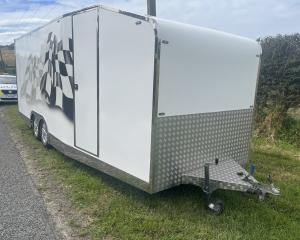
These are some of the changes the Addington community wants to see when Waka Kotahi NZ Transport Agency considers how to improve safety on Brougham St for all road users.
NZTA is currently investigating a $40 million project to install dedicated lanes for buses and large trucks as a way to relieve pressure on one of the city’s busiest roads.
But residents attended a recent meeting at Addington School to discuss their own ideas.
They were concerned the proposed changes will not alleviate safety concerns for children walking to school in the area as the lane was likely to be close to the footpath.
School board of trustees chairwoman Jo Robertson said residents want the design of the road to reflect the fact it is going through a residential area.
"We want the Brougham St area to be safe, particularly for our most vulnerable people,” she said.
"We want to see a design that has the goal of reducing traffic in order to reduce [its] effects, such as noise, shaking and pollution. We want to be able to access our properties and facilities easily and safely.”

NZTA met with the school last year over concerns about the safety of its pupils who cross the 60km/h road daily to get to school.
Said Robertson: "We want the Brougham St area to be safe – particularly for our most vulnerable people.
"A well-designed subway under the road would be fast for cyclists and aims to keep us safe But for children, the elderly, women, people with disabilities, and our vulnerable immigrant community going underground into a closed-in area doesn’t feel safe.
"There are many intersecting areas of trauma and disadvantage among the residents of Addington that need to be considered in any design.”
She said most people would prefer well-designed street level crossings at Collins St, Selwyn St, and Antigua St.
"We want the design and speed limits of Brougham St to reflect the fact that it is going through a residential area,” Robertson said.
The speed limit should also be dropped to 40km/h.
"Trees, signage, low speed limits should all help to indicate to traffic that there are schools, churches, and houses around. Speed cameras and red-light cameras would help to enforce.”
Robertson also said the school wants to see the Government’s commitments to tacking climate change in evidence in the planning for Brougham St.
There needed to be an emphasis in planning the road on reducing carbon-emissions.
"We would like to see what climate implication assessments have been carried out on all plans. We want to see a design that has the goal of reducing traffic, in order to reduce the effects of traffic such as noise, shaking, and pollution.
"Adding more lanes for traffic has the effect of adding more vehicles. Increasing vehicles on the road has many negative effects for residents."
Robertson said the focus for planning needs to be on finding ways to reduce traffic.
"This could include better public transport infrastructure from the outer suburbs, putting freight onto rail, especially logging trucks and container trucks, designing the road so that people need to find solutions other than single occupancy vehicles. Of course, this would also all help with sustainability and reducing climate change.”













